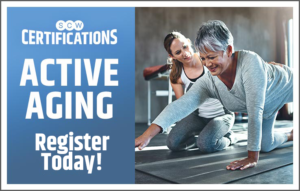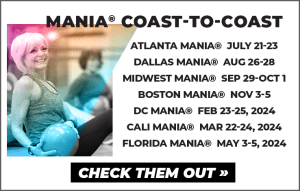THE SPORT OF THE SUMMER: HOW TO TRAIN TO BE A PICKLEBALL PRO
By Sara Kooperman, JD & Sydney Rothschild
Five years ago I didn’t even know what pickleball was, now I play regularly. Over the past few years, pickleball has become one of the fastest growing sports in the United States. According to the Sports & Fitness Industry Association (SFIA), over 8.9 million people played pickleball across the country in 2022 which was nearly double the 4.8 million players reported in 2021. While the game had been on the rise prior to Covid-19, the pandemic definitely helped further spread its popularity as seen in a report by the Association of Pickleball Professionals which found that more than 36.5 million people played pickleball from August 2021 to August 2022. Pickleball is a fast-paced and highly addictive sport that has taken the world by storm. The game combines elements of tennis, badminton, and Ping-Pong making it an accessible sport for players of all ages and skill sets.
Off-Court Pickleball Training
Offering off-court pickleball training is growing in popularity. Personal training, group exercise sessions and small group training programs are an excellent way to leverage the popularity of this sport. Connecting with your community while increasing your bottom line revenue will grow your club membership and expand your neighborhood outreach.
Brief History of Pickleball
While only recently becoming popular, pickleball was actually invented in the summer of 1965 on Bainbridge Island, Washington, by three friends: Joel Pritchard, Bill Bell, and Barney McCallum. Using badminton paddles, a perforated plastic ball, and a modified badminton court they created the foundations of the game. Funnily enough the name took after the Pritchard family’s dog, Pickles, who had the habit of chasing after stray balls and stealing them. Throughout the process of creating the game, the three kept in mind their original purpose: creating a game that the whole family could play together. By 1967, the first permanent pickleball court was built in the backyard of Pritchard’s friend and neighbor, Bob O’Brian. Soon after a corporation was formed to protect the sport in 1972 and in 1975 the National Observer wrote the first article about Pickleball. Over time, the rules became more refined and by 1990 the sport was being played in all 50 states of the U.S.
popular, pickleball was actually invented in the summer of 1965 on Bainbridge Island, Washington, by three friends: Joel Pritchard, Bill Bell, and Barney McCallum. Using badminton paddles, a perforated plastic ball, and a modified badminton court they created the foundations of the game. Funnily enough the name took after the Pritchard family’s dog, Pickles, who had the habit of chasing after stray balls and stealing them. Throughout the process of creating the game, the three kept in mind their original purpose: creating a game that the whole family could play together. By 1967, the first permanent pickleball court was built in the backyard of Pritchard’s friend and neighbor, Bob O’Brian. Soon after a corporation was formed to protect the sport in 1972 and in 1975 the National Observer wrote the first article about Pickleball. Over time, the rules became more refined and by 1990 the sport was being played in all 50 states of the U.S.
How One Plays
As someone who is new to the sport myself, I’m still figuring out the rules and understanding the game. For starters, pickleball is played as either singles or (more commonly) doubles. Similar to tennis, a serve starts the game which is hit diagonally crosscourt. After the serve, the ball must bounce before being returned, and then the serving team must let it bounce before hitting the ball back. This is known as the “two bounce” rule. After that, both teams can either volley the ball or play it off a bounce. However, players cannot volley in “the kitchen” which is the seven foot service area (think the area in front of the service line in tennis) on both sides of the court. Players are able to go into the kitchen and hit a ball only once it has bounced. A typical game is played to 11 where participants must win by two. The sport is relatively easy to learn, making it welcoming to newcomers of all ages.
Health Benefits
Besides being a competitive and entertaining game, pickleball offers numerous health benefits. The sport is a full-body workout that incorporates elements of cardiovascular exercise, strength training, and agility. It is estimated that a single game of pickleball can burn up to 600 calories per hour, making it a great way to lose weight while being social. Pickleball is also an aerobic exercise which means it helps lung functionality, control of blood sugar levels, regulation of blood pressure, and improve cardiovascular conditioning. Pickleball is also a low-impact sport that puts less pressure on your joints and muscles. Compared to tennis courts, pickle’s 44-foot by 20-foot court enables players to not have to travel far to keep the ball in play which reduces the strain on knees, hips, and ankles. Additionally, pickleball is great for one’s heart health. In fact, a study showed that playing pickleball may lower a person’s risk of heart disease by positively changing risk factors such as cholesterol levels and blood pressure. It is also an excellent stress reliever as aerobic activities like pickleball cause the body to release endorphins (also known as feel good neurotransmitters) that help relieve stress as well as anxiety.
and entertaining game, pickleball offers numerous health benefits. The sport is a full-body workout that incorporates elements of cardiovascular exercise, strength training, and agility. It is estimated that a single game of pickleball can burn up to 600 calories per hour, making it a great way to lose weight while being social. Pickleball is also an aerobic exercise which means it helps lung functionality, control of blood sugar levels, regulation of blood pressure, and improve cardiovascular conditioning. Pickleball is also a low-impact sport that puts less pressure on your joints and muscles. Compared to tennis courts, pickle’s 44-foot by 20-foot court enables players to not have to travel far to keep the ball in play which reduces the strain on knees, hips, and ankles. Additionally, pickleball is great for one’s heart health. In fact, a study showed that playing pickleball may lower a person’s risk of heart disease by positively changing risk factors such as cholesterol levels and blood pressure. It is also an excellent stress reliever as aerobic activities like pickleball cause the body to release endorphins (also known as feel good neurotransmitters) that help relieve stress as well as anxiety.
Strength Building Exercises
Despite the social component and health benefits of pickleball, we all know that at the end of the day we all want to crush our opponents as this is a competitive game after all! The best way to get extra power on the court is to get stronger off it through strength training exercises. Pickleball is a great workout, but it is not the most efficient way to build muscle which is why strength training is so important. There are three main benefits of strength training for pickleball players:
- Power Increasing Performance – building up muscles and one’s overall strength means you are then able to hit the ball harder. Increasing not only strength in shots but confidence on the court as well.
- Boosted Speed and Endurance – stronger muscles also can lead to faster running and more endurance to get every shot. Running and hitting become easier, enabling you to keep doing them for longer.
- Lower Risk for Injuries – strengthening muscles also strengthens bones, tendons, and ligaments which makes your joints less vulnerable to injury.
There are many ways to build strength from bodyweight exercises such as squats, push-ups, and sit-ups to gym equipment exercises that utilize dumbbells, barbells, kettlebells, or cable machines. The key to strength training is finding a routine that works for you and keeping with it as even a few simple exercises can create a huge difference in your pickleball game. Here are five of some of the best strength training exercises for pickleball players:
- Split Squats – builds leg strength to help you easily hit the lower shots that can often come at you during pickleball. This exercise uses your quadriceps, glutes, and hamstrings.
- Dumbbell Lawnmower Rows – helps strengthen back muscles and better trains your core to rotate with more strength which is helpful with turning to hit forehands and backhands in pickleball. In this exercise your quadriceps, hamstrings, and biceps will be utilized.
- Goblet Squats – strengthens your legs to help with jumping and overall movement on the court. The exercise uses your quadriceps, glutes, hamstrings, lower back muscles, abdominals and biceps.
- Dumbbell Chest Press – Just like most racquet sports, in pickle you tend to favor one arm which can lead to strength imbalances. This exercise works to counteract and correct these bodily imbalances through the use of chest muscles, front deltoid, and tricep muscles.
- Single-Leg Deadlifts – not only does this help with balance and coordination, but also build serious leg strength. This exercise will mainly use your hamstrings as well as your gluteus maximus and gluteus medius.
Strengthening Your Core
Besides strength training, another key way to improve your pickle skills is developing a strong and stable core. The core stretches from the pelvis to the neck and surrounds the trunk, the central part of your body that houses most internal organs. Your core muscles are crucial in generating power, maintaining balance, and enacting precise movements on the court. Incorporating these forms of exercise into your routine can improve your agility, shot accuracy, and stability during your pickleball games. A well-conditioned core not only optimizes your pickleball skills but also contributes to better balance, posture, and prevention of injury in your everyday life.
- Plank Variations: Plank exercises are most effective at engaging all of your core muscles. Using a basic forearm plank, ensure that elbows are directly under your shoulders and your body is a straight line. Hold this position for either 30-60 seconds.
- Russian Twists: Russian twists are a great way to strengthen your obliques and improve rotational power which is essential for powerful shots in pickleball. Start by sitting on the floor with your knees bent and your feet lifted off the ground. Then lean back slightly while keeping your back straight. Have either a medicine ball, dumbbell, or kettlebell in your hands and rotate your torso from side to side. As you rotate, tap the weight on the ground and go for 10-15 repetitions on each side.
- Bicycle Crunches: Bicycle crunches are a staple for developing your rectus abdominal and oblique muscles, creating a stable core. Begin by lying on your back with your hands behind your head and your knees bent. Then, lift your shoulders off the ground while bringing your right elbow towards the opposite knee, extending the right leg straight. Repeat on the other side and repeat 15-20 times.
- Dead Bugs: Dead bugs improve your core stability, coordination, and control. Start by lying flat on your back with your arms extended straight and your knees bent at a 90-degree angle. Lower your right arm above while straightening your left leg, make sure to keep them just above the ground. Return then to the beginning position and repeat on the opposing side. You should repeat this 10-12 times per side.
- Swiss Ball Pike: The swiss ball pike targets the entire core, including the rectus abdominis, obliques, and lower back muscles. Start in a high plank position with your feet on a swiss ball. Engage your core and begin to lift your hips toward the ceiling, rolling the ball toward your hands. Then, pause briefly at the top and slowly lower your back into the starting position. You should aim for 8-10 repetitions, focusing on controlled movements and maintaining your balance.
- Standing Rotations: Standing rotations help to improve rotational stability and power which are essential for quick changes in direction on the pickleball court. Start with feet and shoulder-width apart and a resistance band at chest height. Engage your core and rotate your torso to one side while keeping your hips stable. Return to the starting position and repeat on the other side 12-15 times.
Conclusion
Pickleball has rapidly gained popularity as a fun and engaging sport for individuals of all ages and skill levels. With its unique combination of tennis, badminton, and ping pong, pickleball offers a dynamic and exciting experience. However, in order to become a pickleball pro it is essential to train both your overall strength and core muscles. Incorporating these exercises into your routine gradually improves your pickleball skills, enhances your performance, and reduces risk of injuries. Trainers of all types are offering growing and financially successful off-court pickleball training. So hit the court with confidence this summer, knowing that you too can excel in the sport of pickleball.
popularity as a fun and engaging sport for individuals of all ages and skill levels. With its unique combination of tennis, badminton, and ping pong, pickleball offers a dynamic and exciting experience. However, in order to become a pickleball pro it is essential to train both your overall strength and core muscles. Incorporating these exercises into your routine gradually improves your pickleball skills, enhances your performance, and reduces risk of injuries. Trainers of all types are offering growing and financially successful off-court pickleball training. So hit the court with confidence this summer, knowing that you too can excel in the sport of pickleball.
Be sure to catch this session and Midwest MANIA 2023:
Pickleball Power & Performance With Sara Kooperman, JD
Experience the best techniques used to train for power and performance for the ever-growing sport of Pickleball. This incredibly creative strength-focused tubing workout uses effective and manageable resistance techniques. Enhance speed, increase endurance, and decrease the risk of injury. Hit the ball harder. Chase the ball faster. Enjoy the sport longer. This pickleball press program ensures your clients will compete at the highest level.
 Sara Kooperman, JD, CEO of SCW Fitness Education, WATERinMOTION®, and S.E.A.T. Fitness sits on the ACSM Communication & Public Information Committee, the Gold’s Gym Think Tank, the canfitpro Advisory Panel and was a founding board member for the Women In Fitness Association (WIFA). Recently nominated for the IDEA Fitness Leader of the Year Award, Kooperman won the 2022 Most Innovating Fitness Pro by Fitness Industry Technology Council. She is also an inductee into the National Fitness Hall of Fame, an Illinois State Businesswoman of the Year, and an esteemed panelist for IHRSA’s Talks & Takes Monthly Talk Show.
Sara Kooperman, JD, CEO of SCW Fitness Education, WATERinMOTION®, and S.E.A.T. Fitness sits on the ACSM Communication & Public Information Committee, the Gold’s Gym Think Tank, the canfitpro Advisory Panel and was a founding board member for the Women In Fitness Association (WIFA). Recently nominated for the IDEA Fitness Leader of the Year Award, Kooperman won the 2022 Most Innovating Fitness Pro by Fitness Industry Technology Council. She is also an inductee into the National Fitness Hall of Fame, an Illinois State Businesswoman of the Year, and an esteemed panelist for IHRSA’s Talks & Takes Monthly Talk Show.

